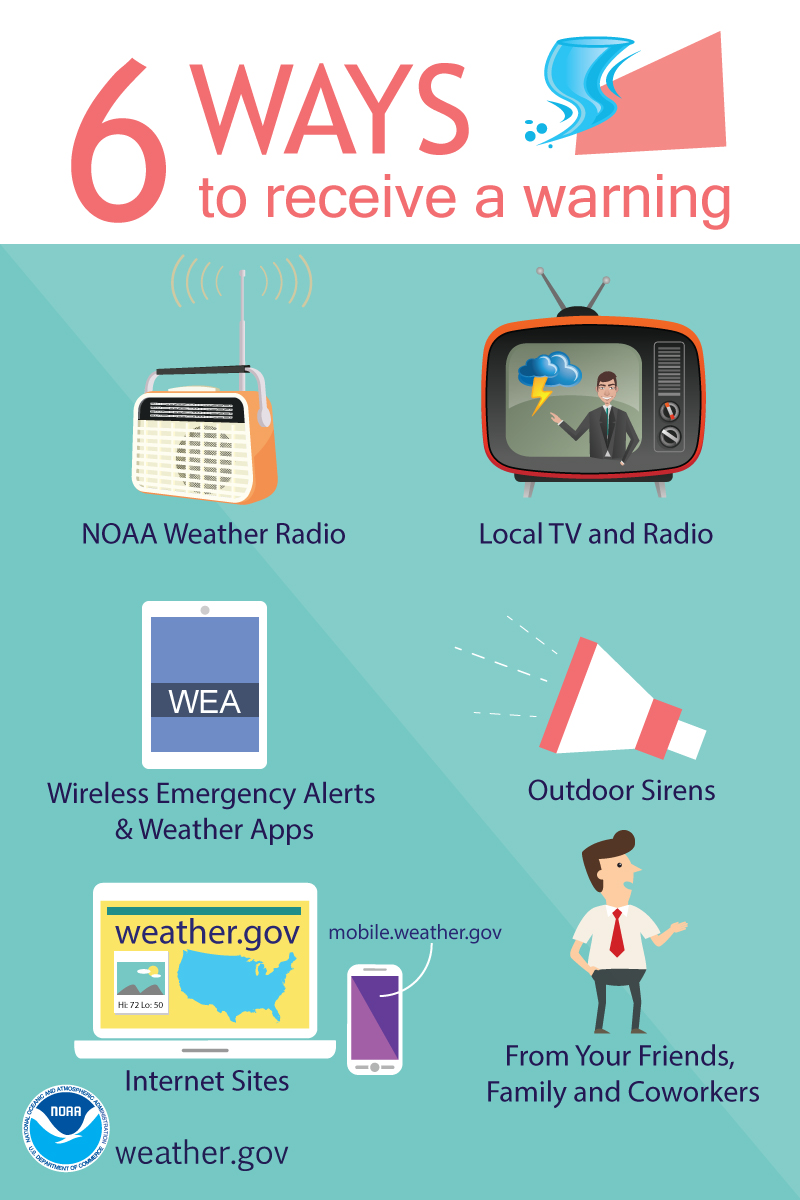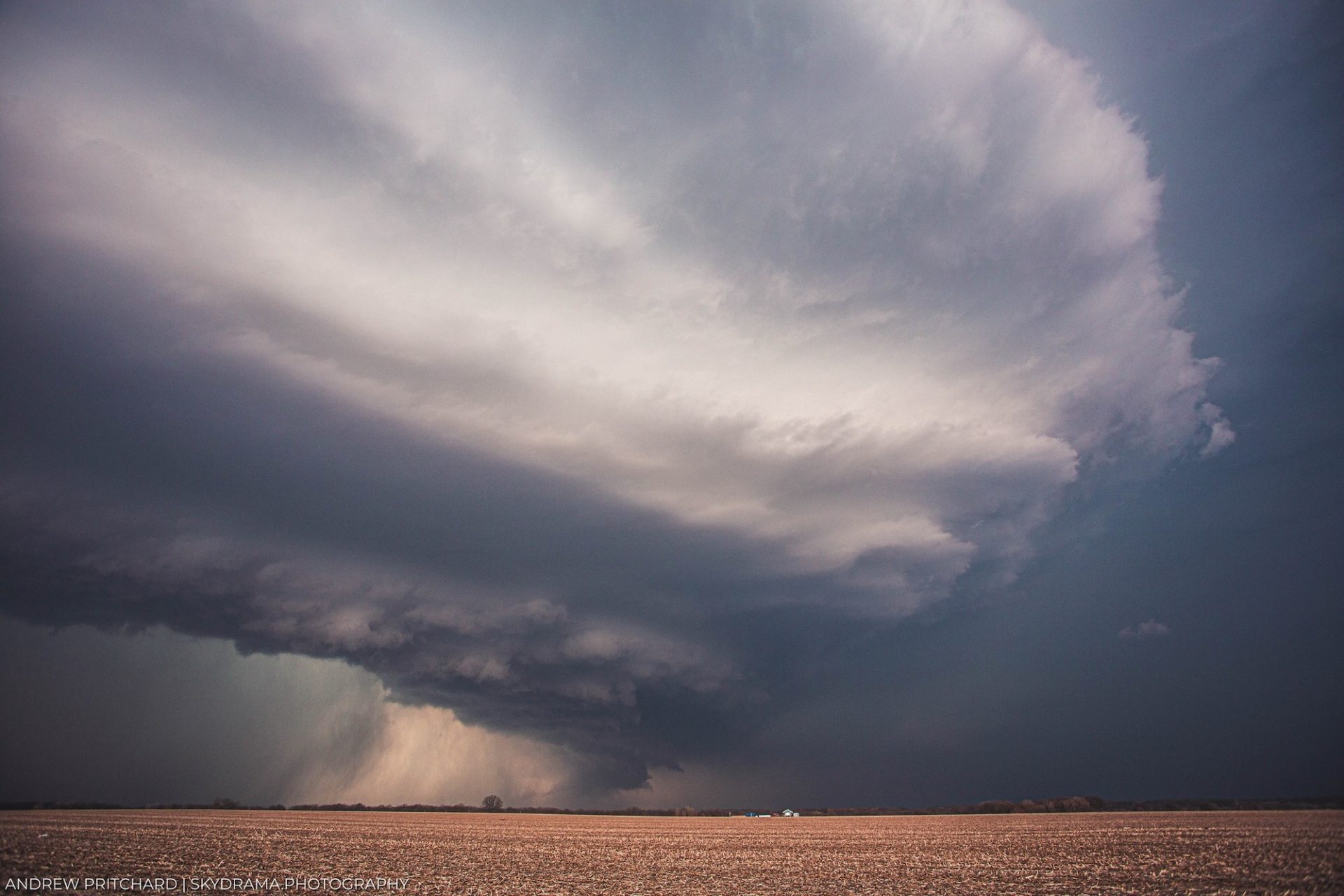Last week many of us were glued to our weather apps, trying to calculate the odds of being blown away in severe thunderstorms. Thankfully the worst of it missed Champaign-Urbana, although there were 11 confirmed tornadoes in Central Illinois during the outbreak. Tornadoes and severe storms are a fact of life in the Midwest, especially in the spring. Climate change only makes the situation more volatile. With so many students and transplants to C-U from all over the country and the world, we thought it would be a good idea to review how to be prepared for severe weather.
The first step in preparedness is having a plan in place for when severe weather strikes. Having an emergency kit ready to go is a good idea. The American Red Cross has developed emergency kits you can purchase online, or you may choose to assemble your own. The Federal Emergency Management Agency has helpful instructions on essential supplies for your emergency kit, as well as lists of what to include if your family includes seniors or pets.
Apart from being ready with your emergency kit, knowing where to safely shelter is important. As Dr. Jeffrey Frame, Teaching Associate Professor in the Department of Atmospheric Sciences at the University of Illinois said:
For tornadoes or severe thunderstorms, people should go to an interior room on the lowest floor of a substantial structure (mobile homes or vehicles are NOT OK). If you don’t have a basement, interior bathrooms are best because the pipes strengthen the walls. If you live in an apartment, know where your safe place is before severe weather strikes because sometimes, there are only a precious few minutes to act. The same goes for your workplace or school. Once in your safe place, cover your head and body with something like a mattress, blankets, or thick jackets. Wear shoes and a bike helmet if you have one. If you have plans on a day when severe weather threatens, consider postponing them. If you cannot, think about where you will be and where your safe place will be.
Another key to preparedness is making sure you have several ways to receive tornado warnings and emergency alerts. The National Oceanic and Atmospheric Administration has an infographic outlining six different ways to receive a tornado warning.

It’s important to have more than one way to receive a warning, in case one method fails — for example, if you live too far away from the outdoor sirens, or you are asleep, you may not hear them. If the internet goes down, having access to an emergency weather radio might be helpful.
Of note: If it’s the first Tuesday of the month at 10 a.m., odds are good that the tornado siren you are hearing is the routine monthly test. But if you are startled by the test siren and feel unsure, you can check one of the other warning resources.
Another important distinction to pay attention to is the difference between a watch and a warning. Your weather app may use an alarming font or color for both watches and warnings but a watch just means the conditions for a tornado are present and it might happen, and a warning means there is actively a tornado on the ground and you need to seek shelter immediately. Or to put it in tastier terms, a watch means you have all the ingredients for a cupcake, and a warning means you get to eat cupcakes:
So what should you do if you receive a tornado watch? Not much apart from making sure you’re paying attention, and have identified your safe shelter space. If you receive a warning, however, don’t be the person that stands on their front lawn, looking at the sky.
Warnings and watches aside, if you’re the kind of person who takes comfort in plenty of advance notice, you might subscribe to the Chambana weather email listserv to get daily emails about the forecast. This will give you an idea of which days you need to pay special attention to alerts and warnings. We also recommend following Dr. Frame and Meteorologist Andrew Pritchard on Twitter. They often Tweet about regional severe weather and if they’re really excited about a forecast, it’s a good cue to check your emergency kit and refresh yourself on your safety plan.
Severe weather is an inevitability in the Midwest in the spring. Pritchard said:
The biggest myth I would love to bust is the idea that there is something geographically special about Champaign County that protects us from severe weather or causes storms to die out or otherwise split and go around us. A devastating tornado impacted portions of Champaign County in 1976. A damaging tornado hit southern Urbana on April 19th, 1996. Additionally, brief tornadoes have caused damage in the Champaign-Urbana city limits in 2018 and 2019, while a damaging hail storm wreaked havoc over Champaign-Urbana on July 11th, 2020. We see the chance for severe weather several times every year in Central Illinois, but more often than not we do not see the worst impacts hit our backyard. That can sometimes create the illusion that storms are constantly going around us, when the reality is we’ve got a storied history of being hit by damaging storms in Champaign-Urbana — some in just the last five years!
But severe weather doesn’t need to be a reason to panic. If you don’t believe us, believe our local weather experts. As Dr. Frame told us, “The vast majority of all tornadoes are survivable if you take the proper precautions.”
The Editorial Board is Jessica Hammie, Julie McClure, and Mara Thacker.








